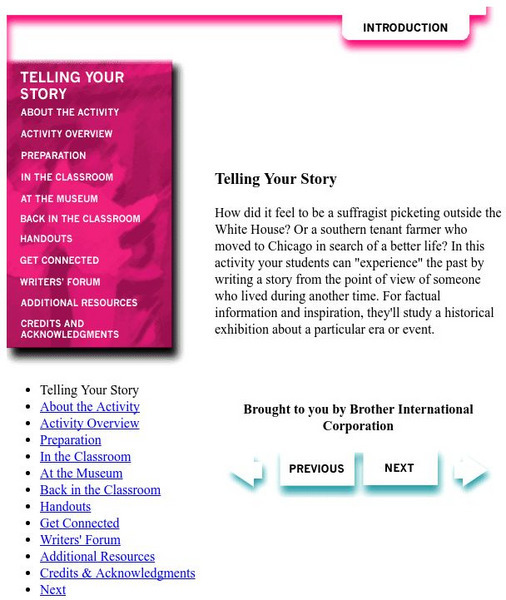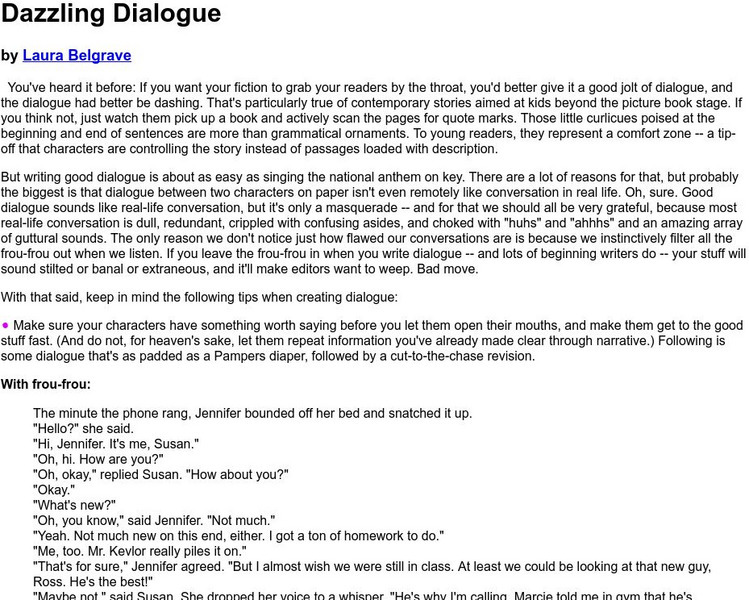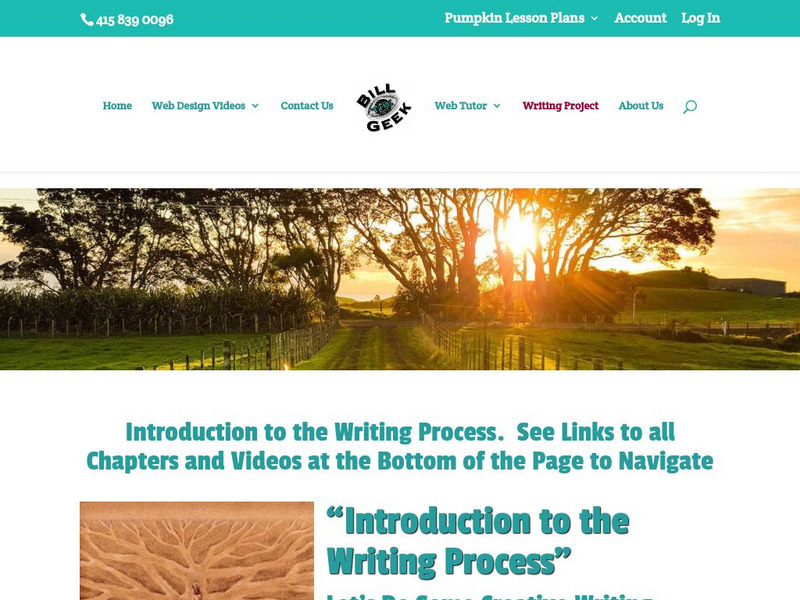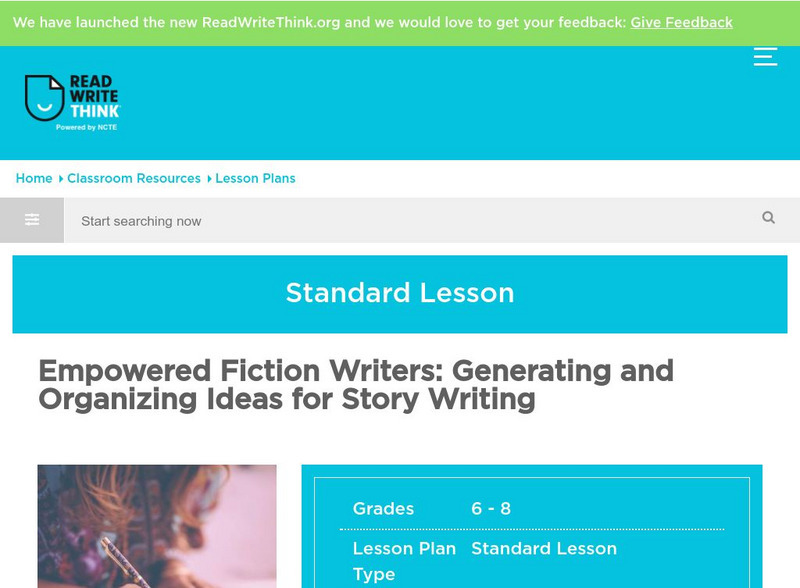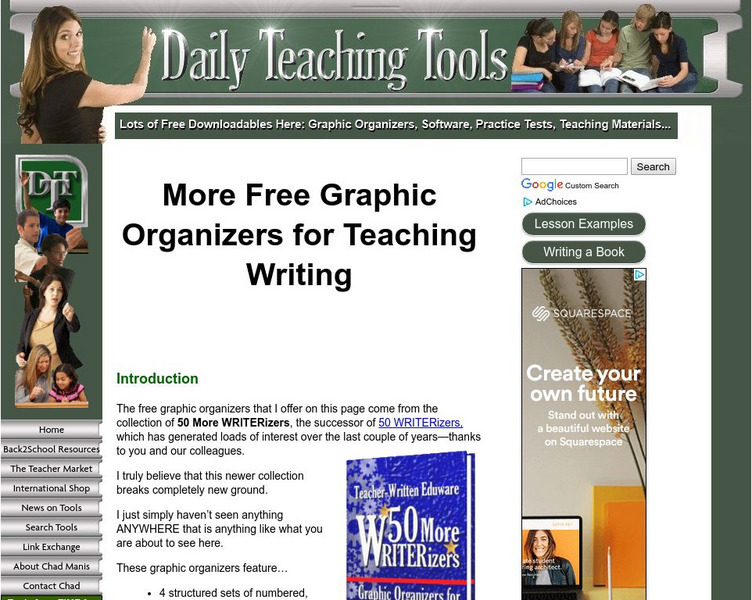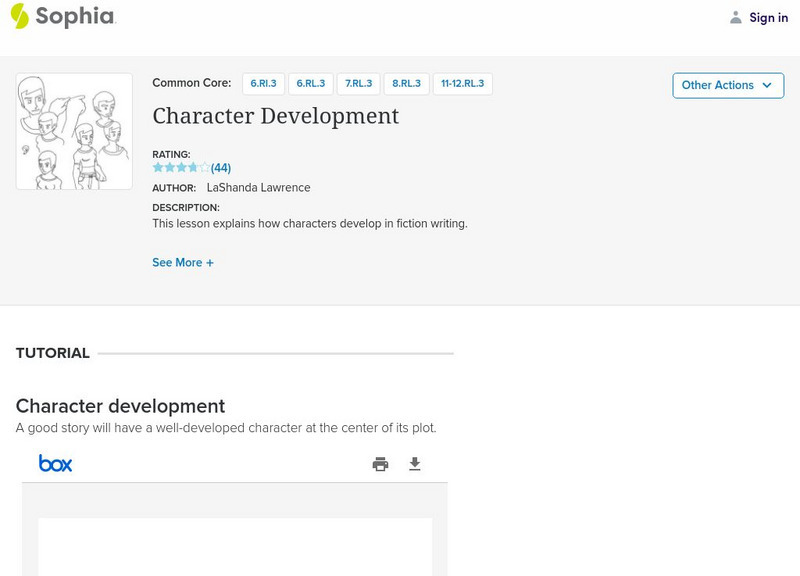Better Lesson
Better Lesson: Developing Characters and Experiences With Sensory Language
Adding sensory languages makes your writing so good you can see, hear, smell, taste and touch it. This lesson will show you how to use descriptive sensory language in order to develop and capture the experiences and characters in a...
Texas Education Agency
Texas Gateway: Literary Nonfiction
[Accessible by TX Educators. Free Registration/Login Required] In this lesson, you will learn how to analyze literary nonfiction, especially speeches, by making inferences and drawing conclusions based on evidence in the text. The...
Texas Education Agency
Texas Gateway: Write Literary Text That Develops Interesting Characters
A learning module that teaches students how to write an literary text with good characterization in four lessons: Introduction, Two Types of Characterization and Two Types of Characters, Choosing Your Characters, and Your Turn.
Texas Education Agency
Texas Gateway: Writing Literary Text With an Engaging Story Line
A learning module that teaches students how to write an engaging literary text in six lessons: Introduction, The Narrative Hook, Setting, Conflict, Plot, and Ending.
Texas Education Agency
Texas Gateway:writing an Engaging Story With Literary Strategies to Enhance Plot
A learning module that teaches students about writing a short story with a strong plot in seven mini-lessons: Introduction, Choose the Point of View, Figure Out What to Say, Suspend Readers in Midair, Write about a Central Theme, Read A...
Yale University
Yale University: Elements of the Short Story
This unit from the Yale University on elements of the short story is designed to develop student comprehension skills, particularly making inferences and generalizing. It also involves students in reading a number of short stories to...
Writing Fix
Writing Fix: Short Adventure Stories
Inspired by the interactive plot ideas here, writers will create an original three-paragraph adventure story. First, each writer will create an original adventurer. Next, each writer will place the adventurer in a brief, organized...
Writing Fix
Writing Fix: Fracturing Tales Through Titles
Students read The Wolf Who Cried Boy by Bob Hartman and then write their own fractured fairy tales using first-person point of view and dialogue. Teacher and student instructions are provided along with student writing samples, an...
Writing Fix
Writing Fix: Serendipitous Character Descriptions
In this lesson, students create a unique character and develop a descriptive paragraph utilizing strong word choice.
Writing Fix
Writing Fix: Action Words Bring Life to Setting Details [Pdf]
Students learn how to develop their ideas through description and action words through a story scavenger hunt. [PDF]
Smithsonian Institution
Smithsonian Education: Telling Your Story
A lesson in which young scholars gain empathy for people who lived during a historical time period by writing a first-person story with experiences that would have happened during that time.
Harold D. Underdown
The Purple Crayon: Writing Dazzling Dialogue
This site takes you through the process of writing dialogue in fiction, demonstrating when to omit, replace, or modify your original writing. Includes several examples and gives excellent advice for young writers. W.9-10.3b Narrative...
Polk Brothers Foundation Center for Urban Education at DePaul University
De Paul University: Center for Urban Education: Expand Story or History Text Based Dialog[pdf]
Students will use graphic organizers to help them make inferences about historical figures' feeings and motives. Students will summarize the information during an extension activity.
Other
Writing Is Exciting!
Students and teachers can use this site to find detailed information on effective and creative story writing.
BBC
Bbc Bitesize: Higher English
This site provides information about characters, plot, and setting of several different pieces of literature. It offers links to activities and tests on topic such as analysis and evaluation, creation and production, drama, novels, and...
ReadWriteThink
Read Write Think: Empowered Fiction Writers: Generating and Organizing Ideas
Do your students' minds go blank when they confront a blank piece of paper? Speedwriting can help them get started with writing as well as come up with topics to write about. They can then incorporate their key ideas and phrases into a...
ReadWriteThink
Read Write Think: Choose Your Own Adventure: A Hypertext Writing Experience
This series of lessons involves student collaboration, writing and analytical skills, technology and imagination. While the activity suggests use of FrontPage, it would also be possible to use a number of other authoring tools.
Writing Fix
Writing Fix: Story Starters: Intriguing Titles
In this lesson, an interactive link included to help generate ideas for stories. A button is clicked and a topic is given. In a writer's notebook or journal, each student will use the topic given and develop it. [Requires Adobe Reader.]
Daily Teaching Tools
Daily Teaching Tools: Project Narration
This Daily Teaching Tools resource provides graphic organizers for narrative writing. Students will be able to prewrite and draft their narrative writings more efficiently by using these tools.
ReadWriteThink
Read Write Think: Character Clash: A Mini Lesson on Paragraphing and Dialogue
Contains plans for a minilesson that teaches about proper dialogue format while writing, specifically paragraphing. In addition to objectives and standards, this instructional plan contains links to sites used in the lessons as well as...
Sophia Learning
Sophia: Character Development
This lesson explains how characters develop in fiction writing. W.11-12.3d Sensory/precise lang narratives
Other
Write4 kids.com
This site provides a great deal of information on writing children's stories. Contains "Advice, instruction, insider tips, insight and inspiration."
TES Global
Blendspace: Dazzle Me With Dialogue
An eleven-part learning module with links to websites and texts to use while learning how to write and punctuate dialogue.
Caro Clarke
Loving Your Characters Too Much
This article is the fifth in a series that is designed to help new authors with their new novels. This lesson focuses on your main character and what happens when that character lacks character flaws.




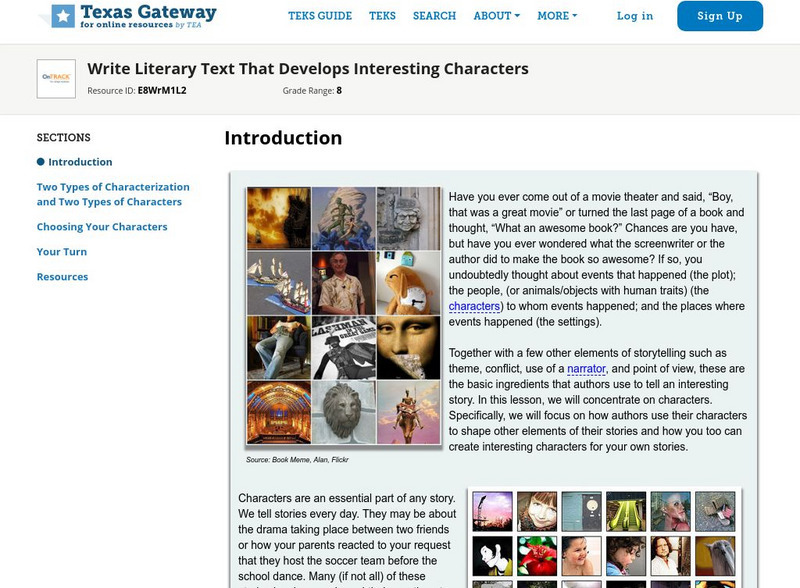
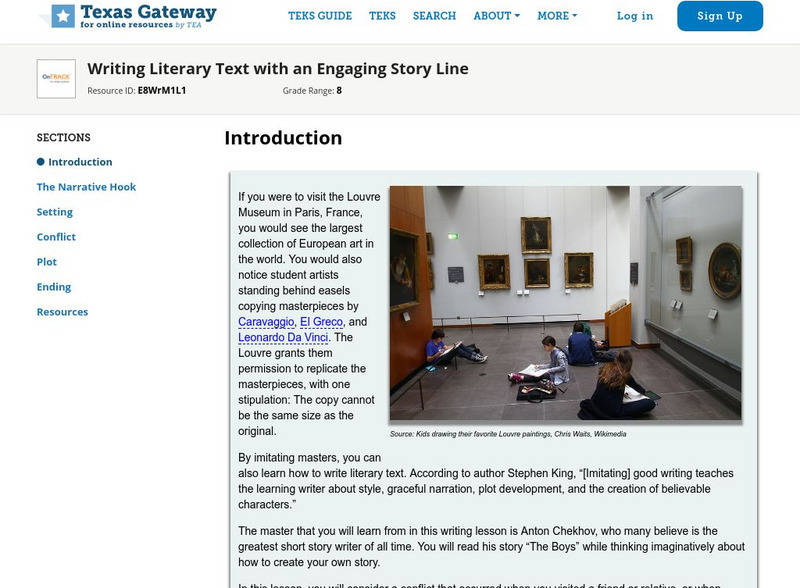

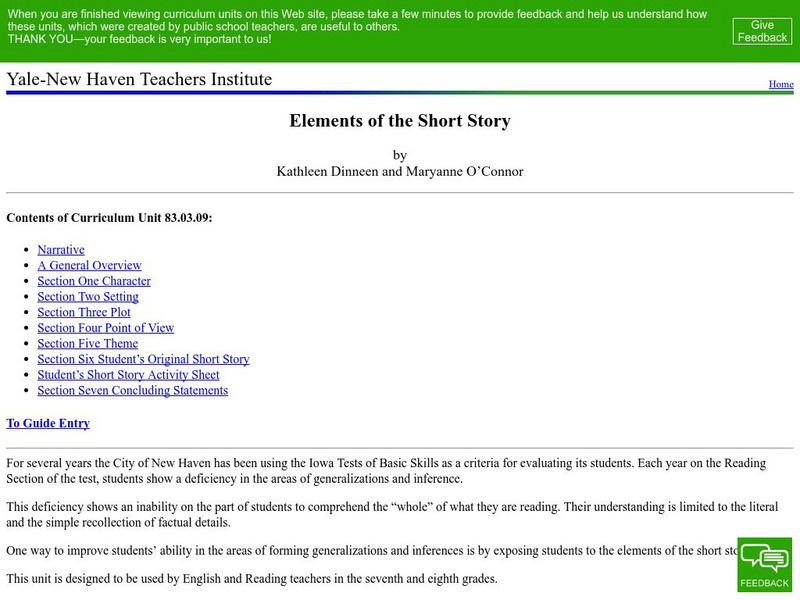

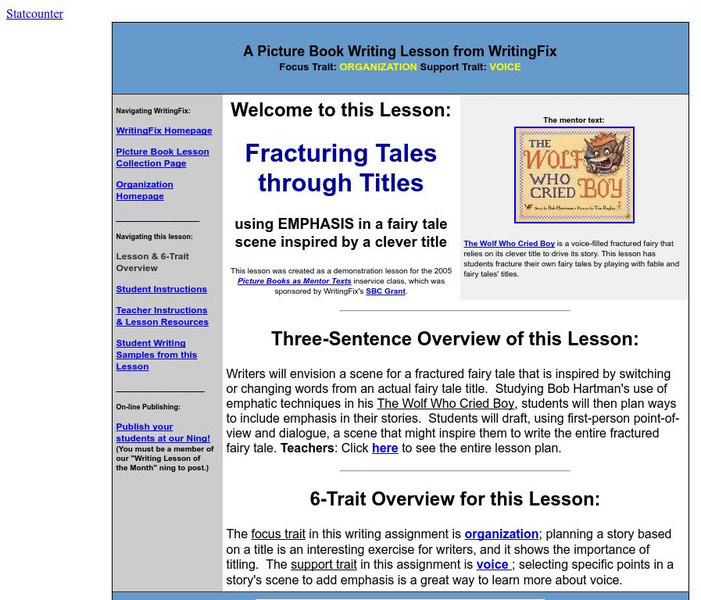

![Writing Fix: Action Words Bring Life to Setting Details [Pdf] Lesson Plan Writing Fix: Action Words Bring Life to Setting Details [Pdf] Lesson Plan](https://d15y2dacu3jp90.cloudfront.net/images/attachment_defaults/resource/large/FPO-knovation.png)
